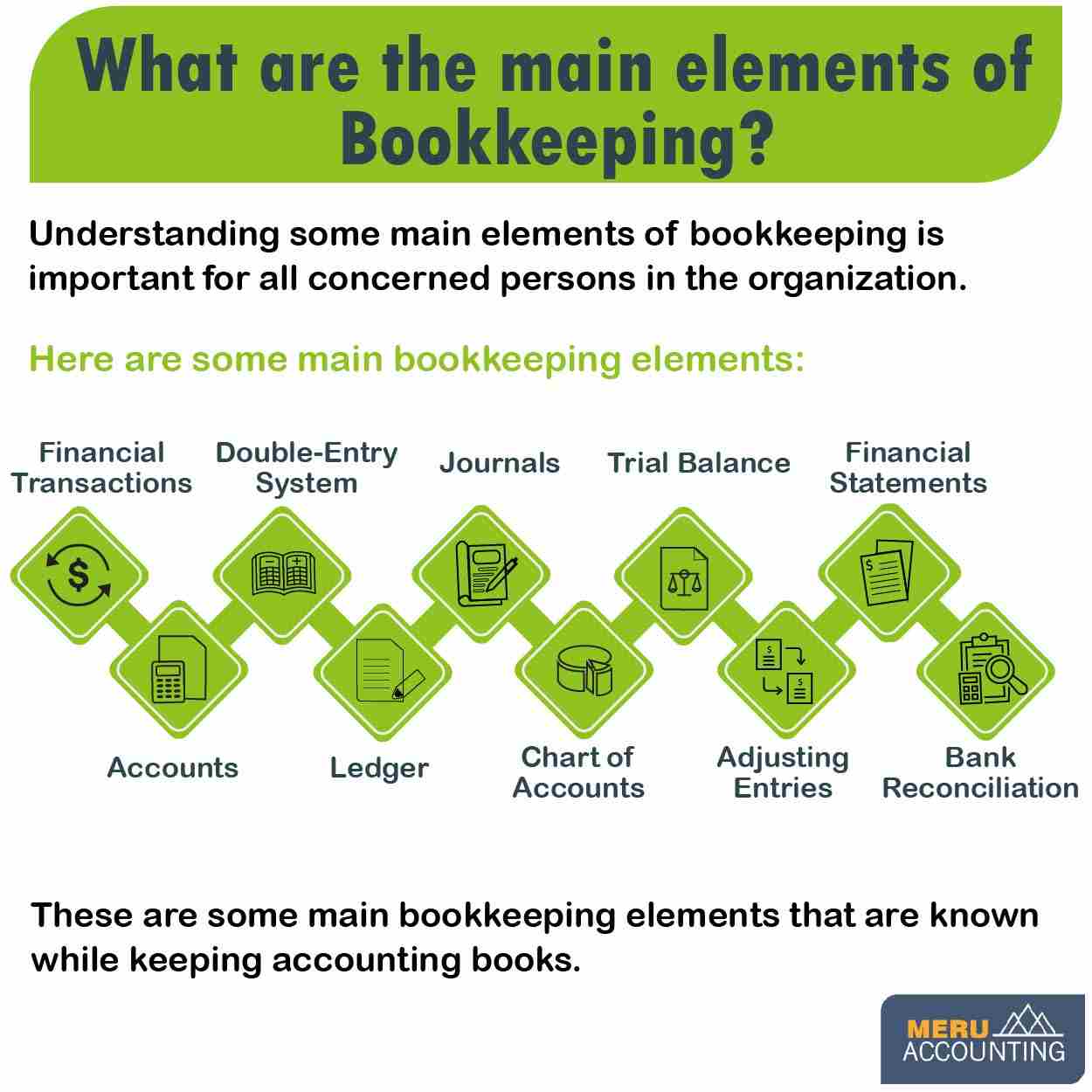Table of Contents

What are the main elements of bookkeeping?
Keeping efficient bookkeeping is one of the vital aspects of any business. It is one of the procedural aspects of proper financial transaction recording and accounting.
However, bookkeeping must not be limited to the bookkeepers only. Whether you are an entrepreneur, manager, or new to bookkeeping, it is essential that you know some basic elements of bookkeeping.
Knowing them is the key to getting proper bookkeeping procedures. Before going deep into complex aspects, you must know some basic bookkeeping elements. It will help you to track and plan the financial activities of your business.
List of main elements of bookkeeping
Financial Transactions
Bookkeeping begins with the recording of all financial transactions, such as sales, purchases, expenses, and investments. Every transaction should be documented with relevant details like date, amount, and description.
Accounts
Accounts are important bookkeeping elements and they are used to categorize and organize transactions. Common accounts include cash, accounts receivable, accounts payable, revenue, expenses, and assets. Specific type of financial activity is represented by each account.
Double-Entry System
This system is the foundation of bookkeeping. It means that every transaction has at least two entries: a debit and a credit. Debits and credits must always balance, ensuring the accounting equation (Assets = Liabilities + Equity) holds true.
Ledger
The ledger is where transactions are recorded in individual accounts. There's a ledger account for each type of transaction or account. It includes details like the date, description, and amount of each transaction.
Journals
Journals are the initial records of transactions. They serve as a chronological record of financial events. Common types of journals include sales journal, purchase journal, and cash journal.
Chart of Accounts
All the accounts in the bookkeeping system are listed here. It provides a systematic way to categorize and track transactions. A hierarchical structure is followed while keeping chart of accounts.
Trial Balance
A trial balance is a report that lists all the ledger account balances at a specific point in time. It helps ensure that debits equal credits and that the accounting records are in balance.
Adjusting Entries
Adjusting entries are made at the end of an accounting period to account for items like accrued expenses, prepaid expenses, and depreciation. These entries ensure that the financial statements accurately reflect the business's financial position.
Financial Statements
Bookkeeping leads to the preparation of financial statements, including the Income Statement (Profit and Loss Statement), Balance Sheet, and Cash Flow Statement. These reports gives view of financial performance and position of the business.
Bank Reconciliation
This process involves comparing the company's records with those of the bank to ensure they match. Any discrepancies or errors are corrected through journal entries.
If you are not finding better bookkeepers to handle the bookkeeping activities of your organization then you can outsource this task to experts. Accounts Junction provides outsourced bookkeeping services for businesses. Their team of bookkeepers has better main bookkeeping elements and can help you get in efficient bookkeeping. Accounts Junction is a proficient bookkeeping services providing agency across globe.

